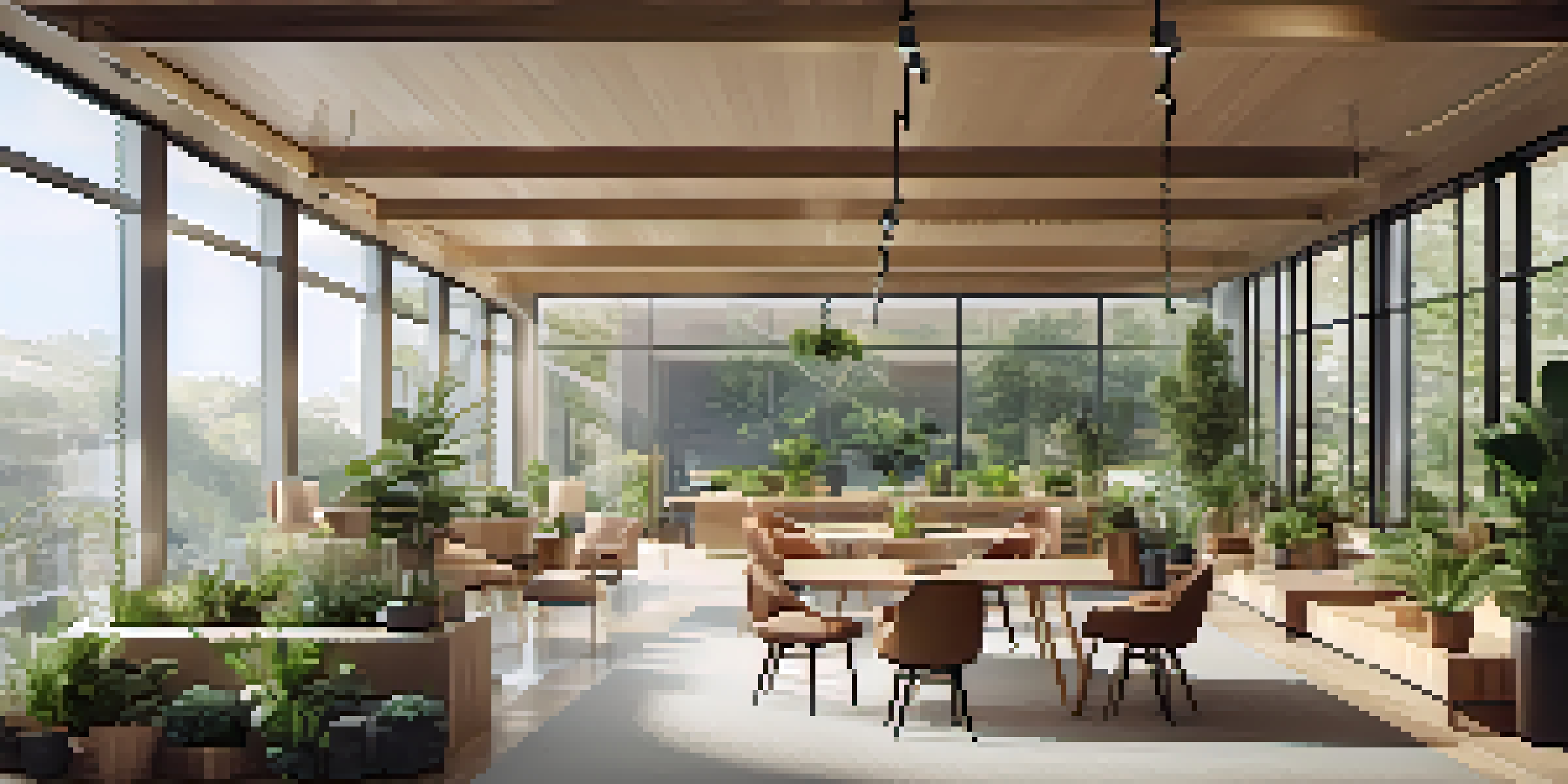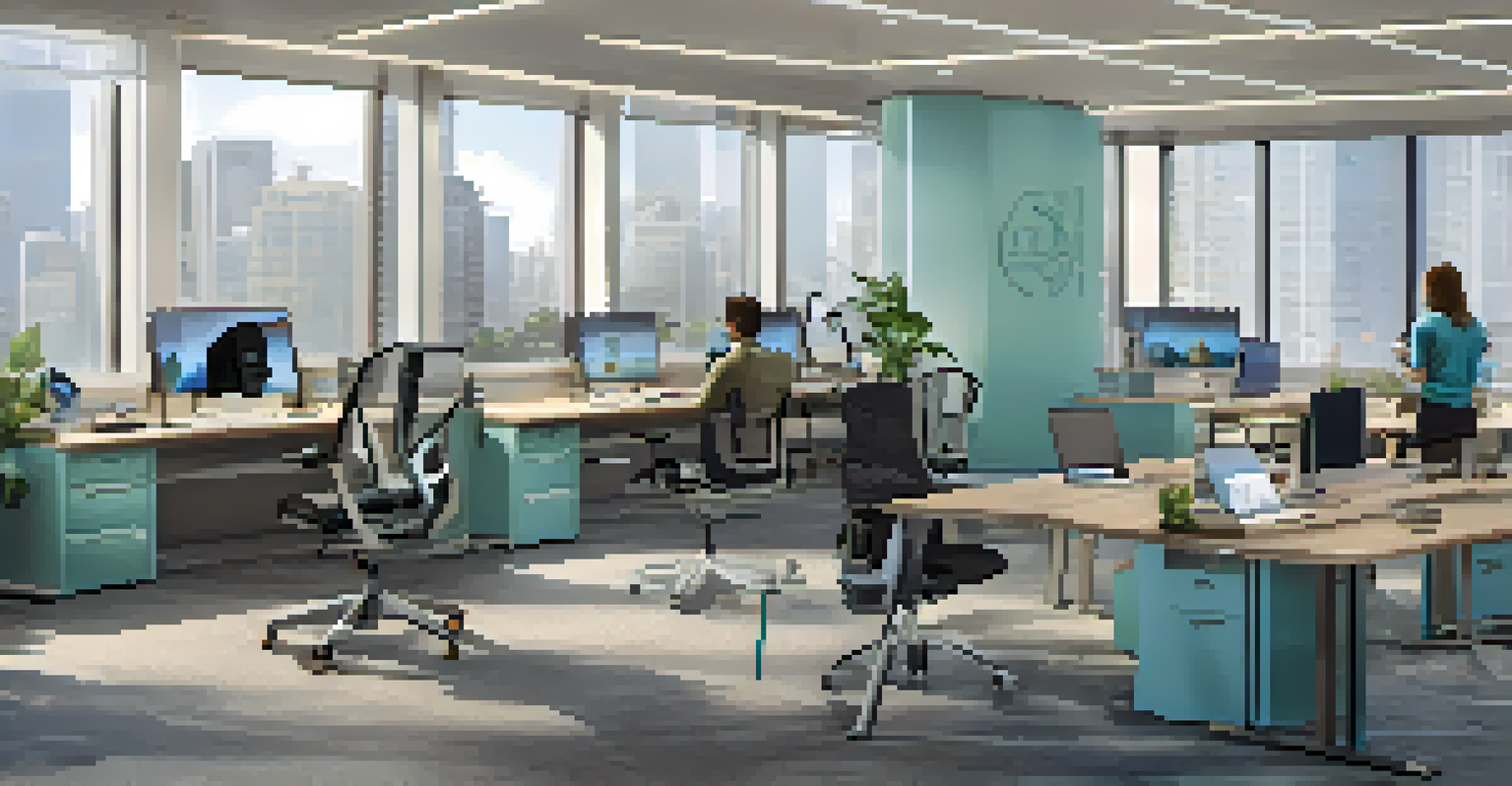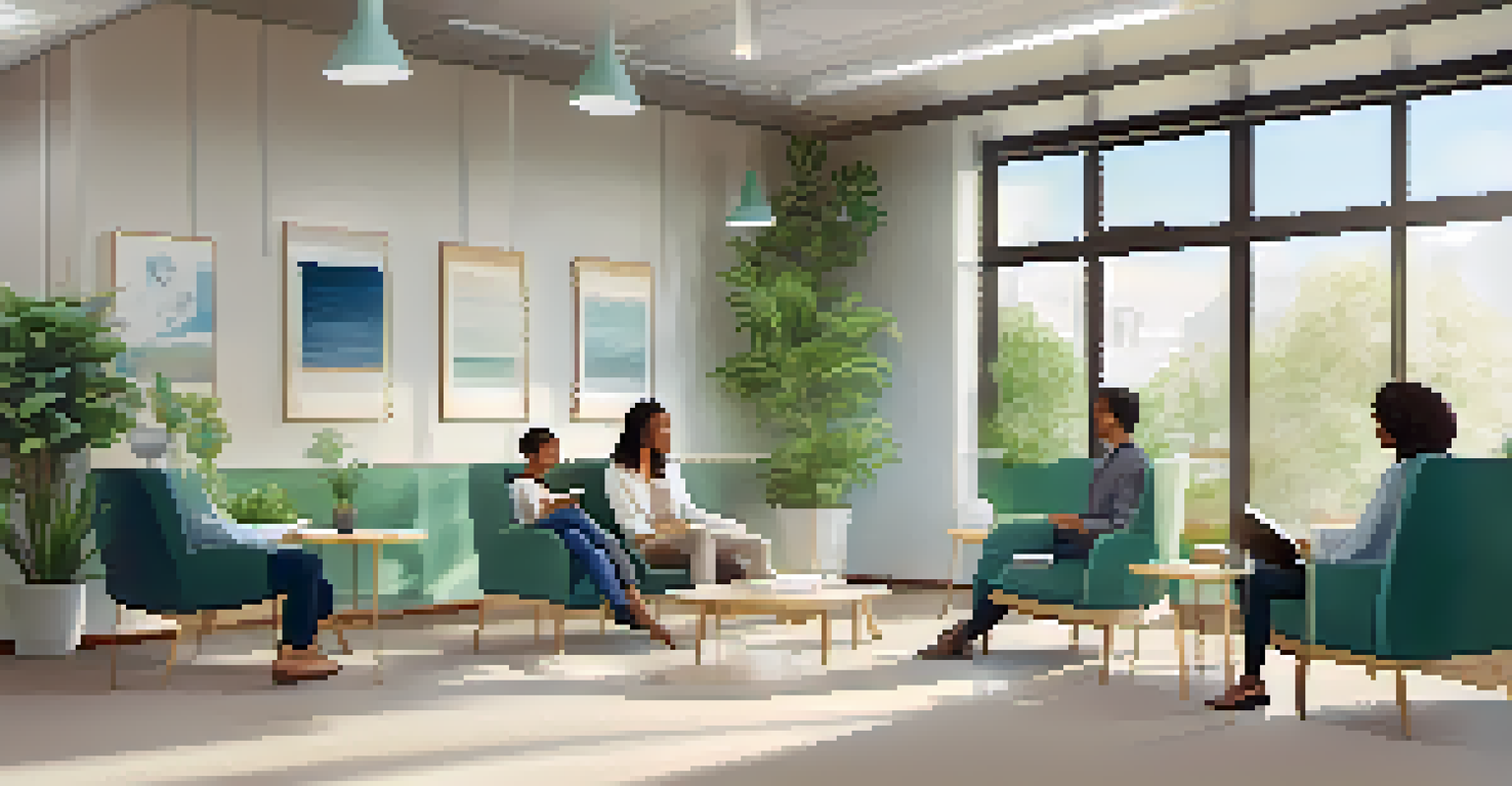The Role of Physical Environment in Employee Well-Being

Understanding Employee Well-Being in the Workplace
Employee well-being refers to the overall health and happiness of workers. It encompasses physical, mental, and emotional aspects that contribute to a satisfying work experience. When employees feel good about their environment, they are more engaged, productive, and motivated.
Take care of your employees, and they will take care of your business.
A supportive workplace can lead to lower stress levels and improve job satisfaction. This means that companies that prioritize well-being are likely to see a boost in performance. In short, the happier and healthier the employees, the better the outcomes for the organization.
Creating a culture that values well-being can be as simple as listening to employees' needs. When businesses invest in their workers' happiness, they foster loyalty and reduce turnover. Ultimately, this can save costs related to hiring and training new staff.
The Influence of Workspace Design on Mood
The design of a workspace can significantly impact an employee's mood and productivity. Open spaces encourage collaboration, while private areas allow for focused work. Finding the right balance between these elements can create a more harmonious environment.

Natural light, color schemes, and furniture layout all play a role in shaping the atmosphere. For example, bright colors can energize a space, while softer tones can promote relaxation. When employees feel comfortable and inspired by their surroundings, it can enhance their overall well-being.
Well-Being Boosts Employee Performance
Prioritizing employee well-being leads to increased engagement, productivity, and job satisfaction.
Additionally, incorporating plants and greenery into the workspace has been shown to reduce stress and increase creativity. By paying attention to these design factors, employers can create a more positive experience for their teams.
Natural Elements: Biophilic Design Benefits
Biophilic design focuses on integrating natural elements into the workplace. This concept is based on the idea that humans have an innate connection to nature. Incorporating features like plants, water elements, and natural materials can create a calming atmosphere.
The environment you create for your team can make or break their success.
Research shows that exposure to nature can lower blood pressure, reduce stress, and improve overall well-being. For instance, an office with large windows offering views of greenery can make a significant difference in employees' moods. The presence of nature can also enhance creativity and problem-solving skills.
Ultimately, biophilic design not only beautifies the space but also nurtures the health of employees. This investment in a natural environment can lead to happier, more productive teams, benefiting both individuals and the organization as a whole.
Ergonomics: Comfort in the Workplace
Ergonomics is the science of designing workspaces that fit the needs of employees. A well-designed ergonomic workspace can prevent injuries and boost comfort, leading to improved performance. When employees are comfortable, they can focus better and maintain higher energy levels throughout the day.
This includes adjusting chair heights, desk setups, and providing supportive equipment. For example, standing desks have gained popularity as they allow for movement and can reduce the risk of back pain. By taking ergonomics into account, employers can show they care about their employees' health.
Workspace Design Affects Mood
The layout and elements of a workspace, including natural light and greenery, can significantly enhance employee mood and creativity.
Creating a comfortable work environment can also lead to greater job satisfaction. When employees feel physically supported, they are more likely to be engaged and motivated, leading to a positive workplace culture.
Noise Levels and Their Impact on Focus
Noise levels in the workplace can greatly affect employee focus and productivity. A loud environment can lead to distractions, making it difficult for employees to concentrate on their tasks. Conversely, a quieter space can foster deeper focus and enhance overall efficiency.
Employers can implement soundproofing measures or create designated quiet zones to accommodate different work styles. For instance, having areas for collaboration and others for focused work can cater to varying employee needs. By managing noise levels, companies can create a more conducive atmosphere for productivity.
Ultimately, finding the right balance in sound can lead to a more positive work experience. Employees who can focus effectively are likely to feel more satisfied and accomplished in their roles.
Temperature Control: A Key to Comfort
Temperature control is another crucial aspect of the physical work environment. Too hot or too cold can lead to discomfort, affecting concentration and productivity. Maintaining a comfortable temperature can help employees feel more at ease and focused.
Employers should consider the diverse preferences of their workforce. For instance, providing adjustable thermostats or personal fans can make a big difference. When employees have control over their immediate environment, they are more likely to feel comfortable and engaged.
Comfort and Breaks Promote Health
Creating comfortable work environments and designated break areas supports mental health and prevents burnout.
A well-regulated temperature not only enhances comfort but can also reduce absenteeism. Happy employees who feel physically at ease are more likely to show up and give their best at work.
The Importance of Break Areas for Mental Health
Break areas are essential for employee well-being, offering a space to recharge and relax. These designated spots allow employees to step away from their tasks, reducing stress and preventing burnout. A well-designed break area can serve as a mini-retreat within the workplace.
Incorporating comfortable seating, calming colors, and even elements like games or art can create a welcoming atmosphere. For example, a cozy lounge area can encourage social interactions and foster a sense of community. When employees feel supported in taking breaks, they can return to work refreshed and ready to tackle their tasks.

Moreover, regular breaks can enhance creativity and problem-solving abilities. By valuing the need for downtime, employers signal that they prioritize mental health, ultimately benefiting the entire organization.